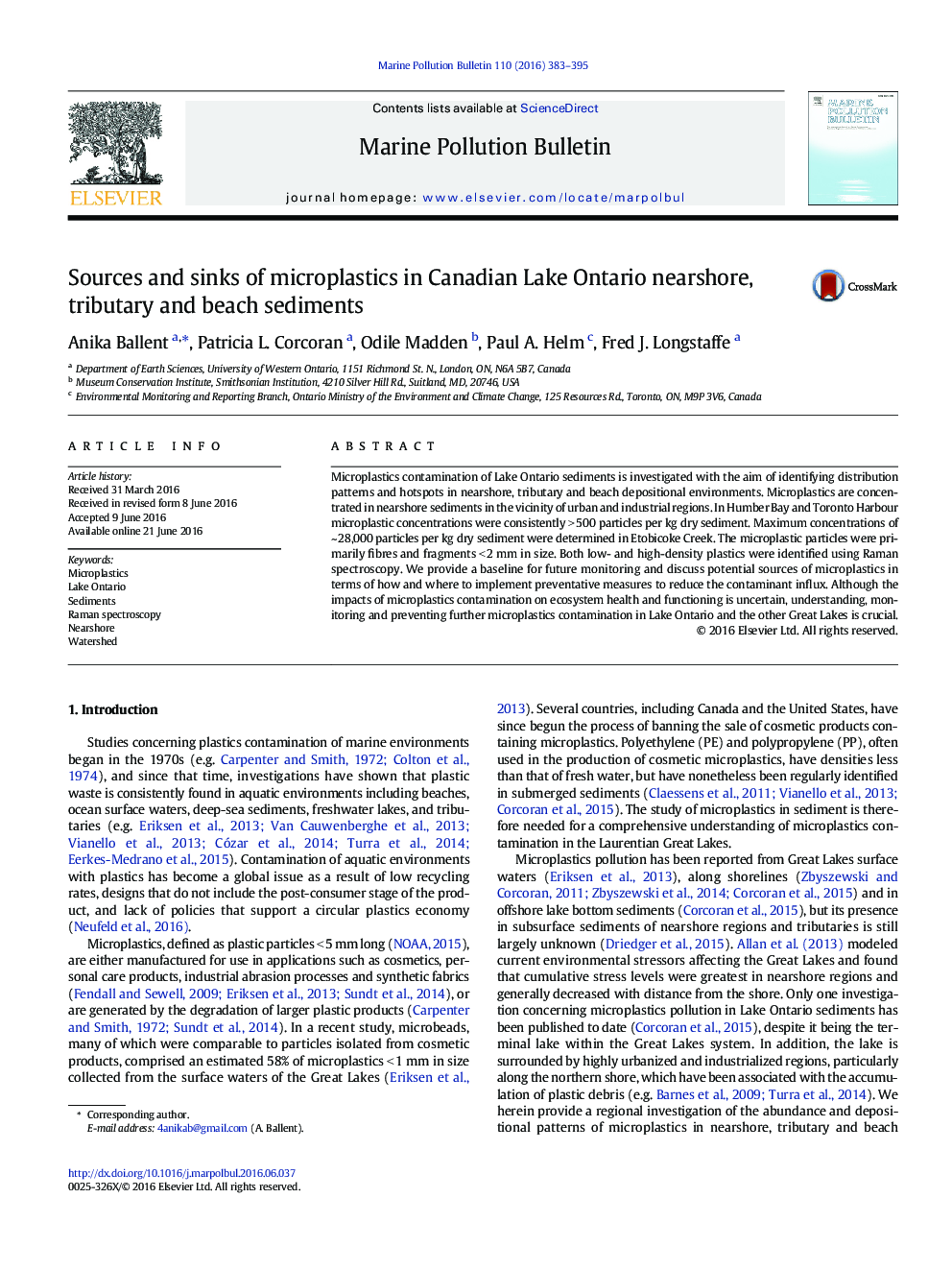| Article ID | Journal | Published Year | Pages | File Type |
|---|---|---|---|---|
| 6355706 | Marine Pollution Bulletin | 2016 | 13 Pages |
â¢Microplastics are ubiquitous in coastal sediments of Lake Ontario.â¢Microplastics in sediments are most concentrated in Toronto Harbour and Humber Bay.â¢Tributaries are transport pathways and depositional zones for microplastics.â¢Average microplastics abundance was ~ 760 particles per kg dry sediment.
Microplastics contamination of Lake Ontario sediments is investigated with the aim of identifying distribution patterns and hotspots in nearshore, tributary and beach depositional environments. Microplastics are concentrated in nearshore sediments in the vicinity of urban and industrial regions. In Humber Bay and Toronto Harbour microplastic concentrations were consistently >Â 500 particles per kg dry sediment. Maximum concentrations of ~Â 28,000 particles per kg dry sediment were determined in Etobicoke Creek. The microplastic particles were primarily fibres and fragments <Â 2Â mm in size. Both low- and high-density plastics were identified using Raman spectroscopy. We provide a baseline for future monitoring and discuss potential sources of microplastics in terms of how and where to implement preventative measures to reduce the contaminant influx. Although the impacts of microplastics contamination on ecosystem health and functioning is uncertain, understanding, monitoring and preventing further microplastics contamination in Lake Ontario and the other Great Lakes is crucial.
Graphical abstractDownload high-res image (208KB)Download full-size image
